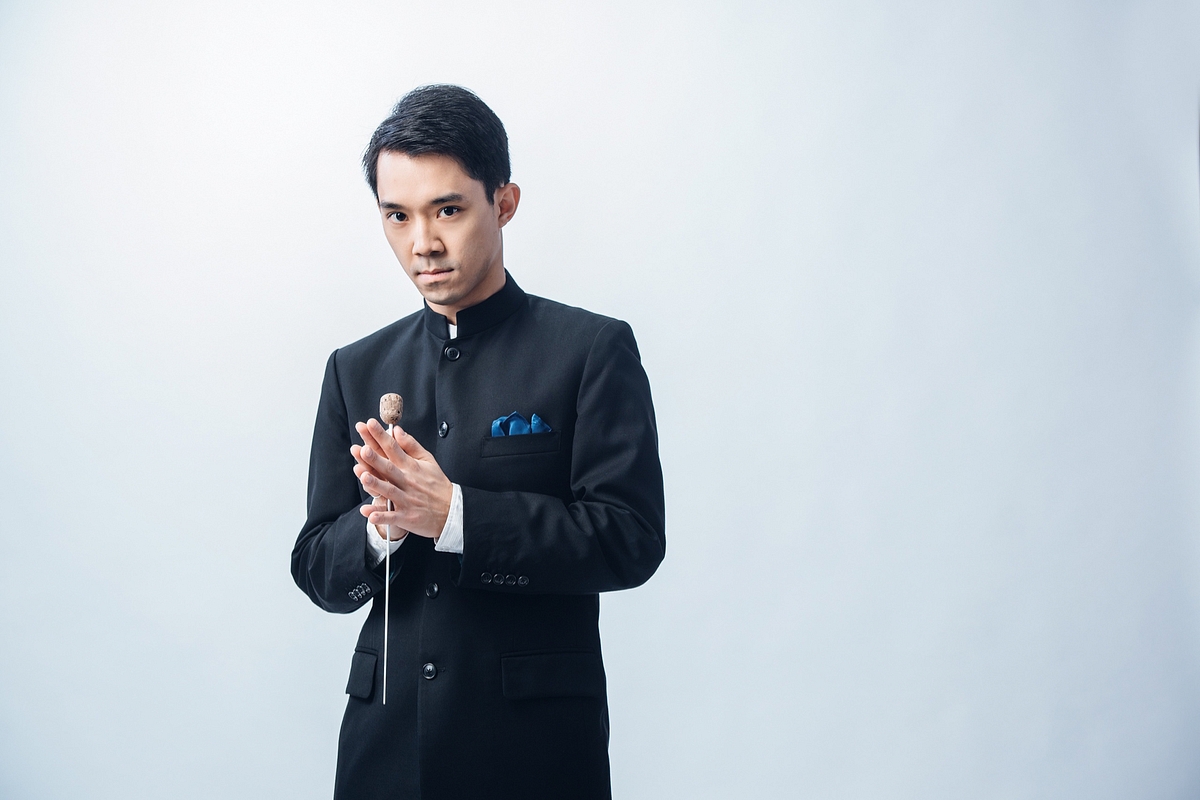
Perry So.
Conductor and New Haven Symphony Orchestra music director candidate Perry So offered a concise answer to the question of what an orchestra can provide in response to the needs of current or potential classical music audiences: “A sense of engagement with the past. And a sense of optimism for the future.”
So offered that perspective during a recent phone interview with the Independent.
As a musician, So found himself exploring jazz and electronic music, but always returned to the European classical canon — “all of that in quotes,” he said — because of its continuous tradition. “And there’s a story to be told through that tradition, not just through individual pieces, but through whole programs,” he said.
So’s program, which he will conduct at SCSU’s Lyman Center for the Performing Arts Sunday afternoon at 3 p.m., was chosen to accomplish two goals. For his audition program for the job of the symphony’s music director, he wanted a diverse selection of pieces to allow him and the orchestra to explore each other’s musicianship, “and new music is absolutely a part of that conversation,” he said.
Thematically, So chose works that demonstrated each composer at a point in their career when they were coming into their own voice.
The timing could not be better for the performance of Tania Leon’s “Acana.” Leon was just named a 2022 Kennedy Center Honoree, and So celebrates her recognition after so many years of working underacknowledged for her compositional efforts.
“Acana” was, according to So, written at a time when Leon was coming into her own as a symphonic composer. Leon’s career began as a pianist, but when she became music director of the Arthur Mitchell Dance Theater of Harlem, she began writing compositions for dance, and her career took off from there.
“It’s written for a Beethoven-sized orchestra, although the two percussionists are playing six, seven instruments each. It’s fortunate we didn’t have to augment the orchestra very much for this,” So said. He invites the audience to listen to what about the piece evokes growth and natural processes, whether it’s the “street music”-like bookends for two trumpets, or the fast sections in the middle that draw on Afro-Cuban rhythms. “It’s kind of an arc structure,” So suggested, “mirroring the life-cycle of [the titular] tree.”
Samuel Barber’s Violin Concerto sees the composer first starting to find success in his struggle to find an American voice in a very European idiom. “Most concertos open with a flash and bang. This one opens with vistas,” So explained. Composed in the 1930s, as storm clouds were gathering over Europe that would affect the rest of the globe, the violin concerto speaks to what So views as “the ground base of optimism that the culture of this country is based on. [This piece] is about engaging with darkness without losing one’s optimism.”
Ludwig van Beethoven’s 3rd symphony, the “Eroica,” follows the program’s theme as Beethoven’s first major groundbreaking orchestral work, in what would be the beginning of a new middle period of Beethoven’s career. According to So, the work is couched in myth and has been the subject of many theories regarding its origins, inspiration, and withdrawn dedication to Napoleon Bonaparte.
“My theory is the second movement — the funeral march — is tied to Beethoven’s experience of going deaf, instead of being about Napoleon or the French Revolution.” In the context of the dance-like movements that surround it, the march reflects the composer’s increasing isolation and withdrawal from society before he had a functioning ear trumpet to help him navigate his uneven health and encroaching disability.
So finds this relatable: “For those of us who are getting to the age where our bodies don’t work quite as well as they used to, I relate quite well to the second movement,” he said. But the work also shows Beethoven struggling to write something that would speak to people on a wide scale as his compositional voice grew, and the sense of triumph speaks as much to Beethoven’s health as it did to the political and social revolutions occurring around this time.
Despite the strong thematic links that hold the program together, So is aware that ultimately it is the music itself that will keep audiences in the hall. “I believe that our experience of sound is tied to something very primal — the engagement with rhythm, the desire to sing and dance along.” Watching his two-and-a-half-year-old daughter try to play ‘The Wheels on the Bus” on her glockenspiel only confirmed that for So. “It’s pretty much hardwired into the way we are as people.”
So believes that this general affinity for music is what keeps people interested in the classical tradition — but also that music has a unique ability to foster dialogue simply by allowing people the opportunity to experience something together, and simultaneously. “It’s a careful balancing act to get the constituencies who are or might become interested in classical music to speak with each other. I think that this program — and my work in general — centers this.”
Perhaps with this goal of fostering dialogue and community relationships, So emphasizes: “There’s no right music to play, so we must play as much of it as we can.”
Perry So conducts the New Haven Symphony Orchestra with work by Tania Léon, Samuel Barber, and Ludwig van Beethoven on Sunday, March 26 at 3 p.m. at SCSU’s Lyman Center for the Performing Arts. Visit the symphony’s website for tickets and more information.